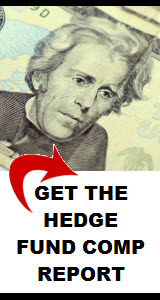In Alpha Calling’s previous article, Hedge Funds: A Positive Perspective on 2018, the timing of its publication was such that a definitive conclusion on year-end hedge fund industry performance could not be reached, as the conclusion required access to yet unpublished HFR data for Q4. Moreover, it would have been inappropriate to use another source inasmuch as HFR was used as the data source throughout the first 11 months of analysis. However, we now have that data. Just as predicted, the HFR asset weighted composite index came in negative, to be precise, -0.68 percent, bringing year-to-date aggregate hedge fund losses to -0.84 percent. This compares very favorably to the S&P 500’s year end result, which found that index down -6.24 percent.
Index Definitions
Careful readers may have noticed that the basis of the analysis is the HFR asset weighted composite index as opposed to the HFR fund weighted composite index. Hedge Fund Research (HFR) data was employed for this brief analysis, largely because Hedge Fund Research is regarded as the doyen of the hedge fund industry.
The HFR asset weighted composite index was used, as opposed to the HFR fund weighted composite index because it offers the fairest overview of industry performance. Per HFR, “the constituent funds of the HFRI Asset Weighted Composite Index are weighted according to the AUM reported by each fund for the prior month.” Careful observers will note that most media outlets choose the HFR fund weighted composite index as a reference point. Readers may draw their own conclusions as to why this is so. Also, it should be noted that neither index includes funds of funds.
HFR sports a variety of indices. Anyone interested in exploring their definitions can find them here.
Relative Performance
Alright—2018 ended in the red for the hedge fund industry as a whole—we get that. As has been stated in previous articles, it is understood that, for whatever reason, media outlets will use this to paint hedge funds in the most unfavorable light possible. However, the facts are the facts!
Hedge funds outperformed the DJIA and the S&P 500 in 2018. For example, the S&P 500 closed the year down -6.24 percent, which means hedge funds, in the aggregate, outperformed the S&P 500 by 643 percent!
What’s Ahead for Hedge Funds and Hedge Fund Jobs?
Prequin, another hedge fund industry doyen, in its recent report entitled The Future of Alternatives, offered several interesting insights from their survey’s participants, the most notable of which projects the hedge fund industry to reach $4.7 trillion in AUM in 2023.
However, the same report also projects that hedge funds will slip to second place in the pantheon of alternative assets, overtaken by private equity, currently in second place. The report also concludes that growth in the number of hedge fund firms has plateaued, with some 14,800 firms in the hedge fund universe, a figure that has remained largely unchanged since 2015, which year marked the apex of the post financial crisis explosion of hedge fund starts.
The next 5 years will be ones of firm consolidation and, as a result a shrinking universe of hedge fund firms. However, within an industry whose assets are expected to grow by 31 percent over the next lustrum, it is clear that opportunities in the hedge fund industry will be plentiful.






Comments on this entry are closed.